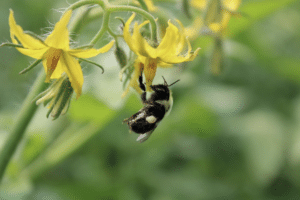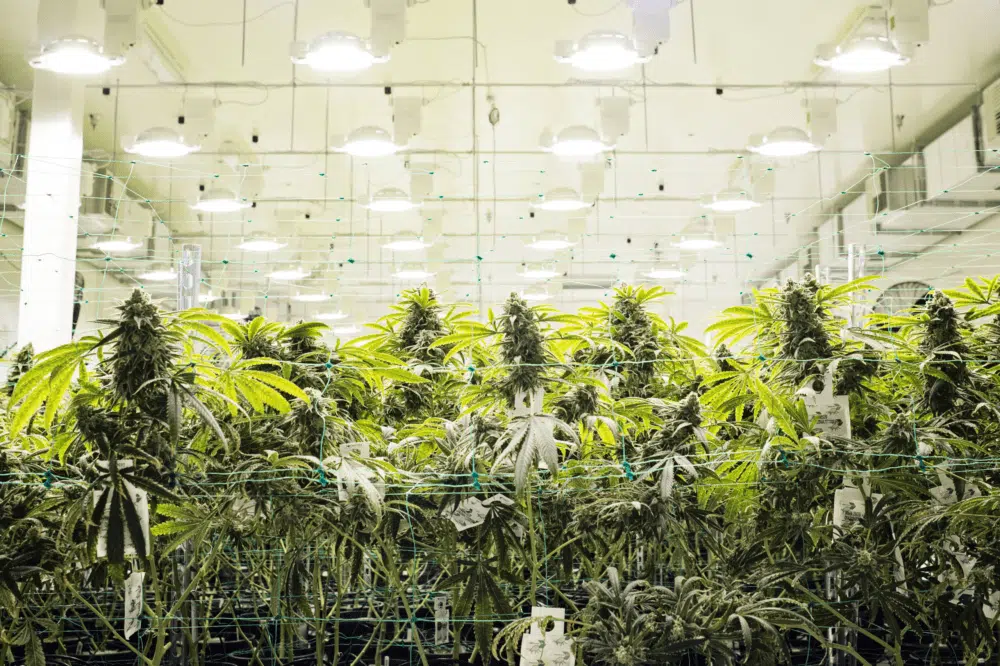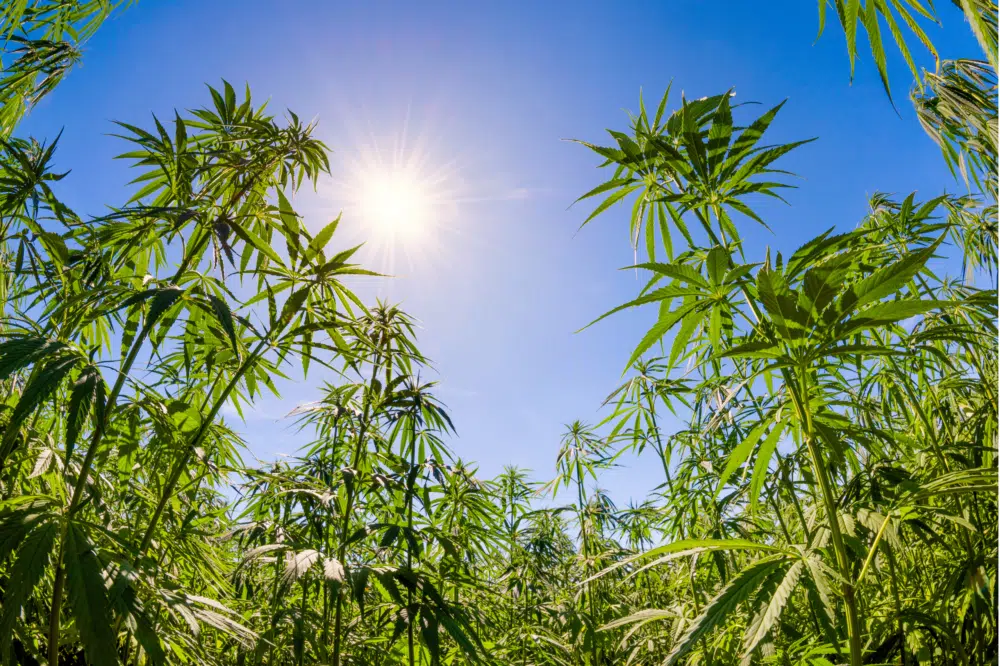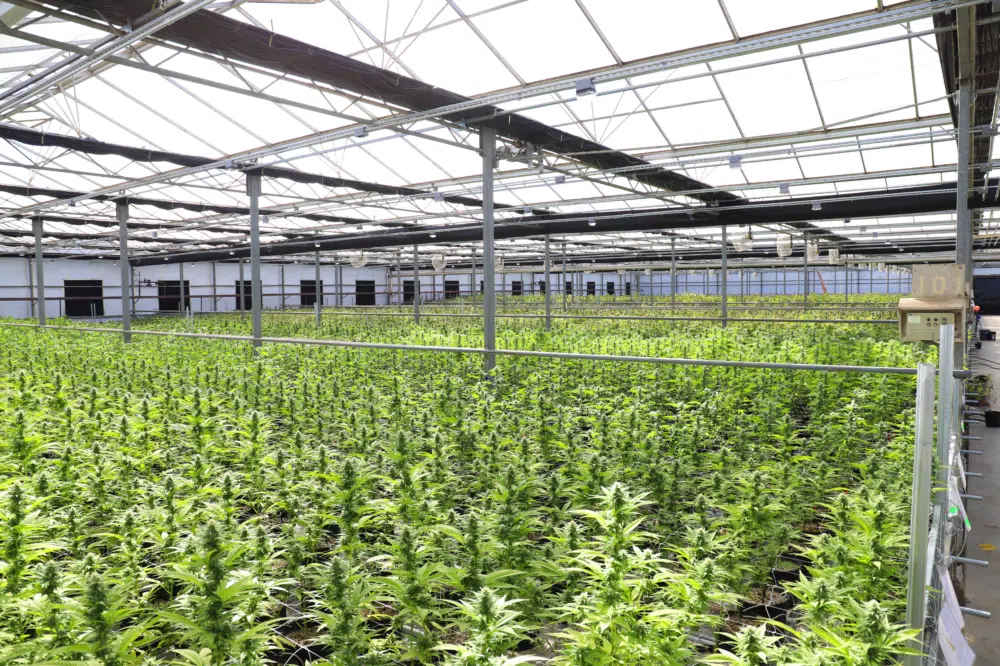
Sustainable Benefits of Sungrown Cannabis

Cannabis that uses the sun as its primary source of light is known as sungrown. Sungrown cannabis, also referred to as outdoor cannabis growing, has some major environmental, medicinal, and economic advantages over indoor-grown cannabis, most of which have been, until recently, largely ignored by cultivators, consumers, investors, and policymakers alike. The benefits of cannabis, especially when it’s sun grown, are significant. By 2024, 46 U.S. states will have some kind of liberalization of cannabis, but nearly all have given little to no consideration to the environmental consequences associated with the extraordinary energy use of indoor cultivation. This must change, and a movement toward sungrown cannabis, highlighting the benefits of cannabis when cultivated outdoors under natural sunlight, is not only the logical direction but the profitable one for investors and cultivators in this nascent industry.
Harms of Indoor Cultivation
As a historically illegal substance, cannabis has been grown indoors for security reasons. Growers also choose indoor cultivation because it also offers environmental control, protection from natural hazards, and allows for consistent harvests, five times a year.

But indoor cultivation is an enormous drain on energy usage. The energy usage for all cannabis cultivation is estimated at 1% of national electricity use, a cost of $6 billion per year. A 2021 study attempted to quantify the magnitude of the industry’s environmental impact, revealing that each pound of dried flower resulted in 2,283 to 5,184 lbs CO2-equivalent of life cycle GHG emissions. For Colorado, this emission exceeds the emission from its coal industry. The carbon use is attributed largely to electricity and natural gas consumption from indoor environmental control, high-intensity grow lights and the direct supply of CO2 as a growth accelerant.
Millions of pounds of cannabis are produced nationwide in warehouse factory farms that don’t use sunlight, and instead opt for energy-intensive grow lights that require even more power consumption for cooling. In fact, as of 2020, 42% of growers use exclusively indoor facilities, and an additional 18% use partially indoor facilities mixed with greenhouse or outdoor. Another recent study concluded that the average Colorado cannabis user increased their household’s carbon footprint by 60%, due largely to the fact that Denver alone contains over 600 indoor grows and does not allow outdoor commercial licenses inside city limits.
Additionally, indoor cultivation generates heaps of solid waste, adds to air pollution, strains local water supplies and threatens worker safety.
Alarmingly, despite these obvious issues, many jurisdictions have enacted policies that encourage and effectively subsidize indoor cultivation – requiring colocation of cultivation and retail, setting fees by square footage, utilities offering industrial rates and energy-saving rebates to indoor growers, and the outright banning of outdoor cultivation. The U.S. national policy of prohibition has not helped, encouraging growers to prefer the security and privacy of indoor cultivation without any national R&D or policy changes to address the power consumption issue. Furthermore, because legalization is not national, states are required to develop programs that require cultivation inside state borders, regardless of climate or the access to affordable electricity or water resources. Imagine if bananas were forced to be grown in Minnesota!
Sungrown Cannabis and the Benefits of Outdoor Cannabis Growing
Prior to the prohibition of cannabis, the flower was grown for thousands of years under natural sunlight, and more recently in controlled environments powered by the sun. Sungrown cannabis, grown naturally and sustainably, has the potential to mitigate many of the issues associated with indoor cultivation, in addition to offering economic benefits resulting from the utilization of free natural sunlight rather than artificial grow lights. This approach, emphasizing the benefits of outdoor cannabis growing, positions sun grown cannabis as an optimal choice. Underneath the sungrown label, there are three archetypes: full-term sungrown (aka ‘outdoor’), light deprivation sungrown, and year-round greenhouse sungrown cannabis cultivation. Each archetype offers major advantages over indoor cultivation in terms of sustainable cannabis farming and captures the essence of the benefits of cannabis.
Full-term outdoor sungrown cannabis is grown in large open fields and represents the cheapest method and a cornerstone of sustainable cannabis farming. It has the fewest inputs, but is susceptible to mother nature’s whims – changes in temperature, pests, rain, frost, wind, and a myriad of natural disasters. As a short day plant that responds to photoperiodism, cannabis is triggered into flowering when the day length reduces to less than 12 hours, at the fall equinox in September in the Northern hemisphere. Flowers develop and mature in a typical timeframe of 8-12 weeks before harvest. This means that full-term cultivation is restricted to one harvest each season, commonly in late October to November, showcasing the benefits of sungrown cannabis in sync with natural cycles and highlighting the unique advantages of sun grown cannabis.

The Greenhouse Alternative
Greenhouse growers control the photoperiodism of sun-grown cannabis by using a blackout covering (tarp) to increase the dark period to 12 hours in the early and middle of summer. This practice is known as light deprivation, or ‘dep’ for short, which showcases the unique benefits of cannabis grown in controlled outdoor environments. Unlike full-term outdoor, dep requires a structural covering to suspend the blackout, so greenhouses are used, or some kind of hoop structure, optimizing the outdoor cannabis growing conditions. Most dep crops, benefiting from the natural sun grown cannabis advantages, are harvested in late August or early September, followed by the full-term round. Emphasizing the benefits of sun-grown cannabis, most dep operations get one additional harvest per year, but some warmer climates can stretch to three (California) and even four (Southwest) harvests per year, underlining the sustainability and efficiency of outdoor cannabis growing methods.

Finally, sungrown cannabis can be grown inside a controlled hybrid greenhouse year-round. This allows five and sometimes six harvests per year, the same schedule as indoor. Some call this method ‘sun-assisted indoor’, because the sealed greenhouse offers the same environmental control and protection from the elements that indoor does, while utilizing free sunlight as the main source of light. This is why a greenhouse is sometimes thought to be the best of both worlds. Most of these operations also utilize greenhouse supplemental lighting for two reasons: to extend the photoperiod in the short winter days, and to increase light intensity when the plants’ needs are not met by sunlight alone. However, the density of lighting used in greenhouses is much more sparse than that used for indoor cultivation due to the contribution of sunlight. Moreover, supplemental lighting is ramped up and down seasonally, as needed. Growers rely on sunlight as much as possible. Overall, this reduces the electricity consumption of greenhouse cultivation.

Consumer Preference
Some people have a strong preference for cannabis grown indoors, but others prefer the subtleties and natural flavors of sungrown cannabis. Budtenders at dispensaries tend to downgrade sungrown cannabis, and shop owners are resistant to identify flower that are grown more sustainably, with less intense energy inputs, highlighting the benefits of sustainable cannabis farming.
Sungrown cannabis, a key player in sustainable cannabis farming, gets a less-than-stellar reputation because large-scale bulk cultivation, often associated with cannabis greenhouse cultivation, makes up the majority of the category and dilutes the fact that high quality and high potency cannabis can and does grow under the sun. This is due to a history of illegal outdoor cannabis, often produced in extremely remote locations, that is shipped out of state, where quality takes a back seat to quantity and transportation concerns. This dilution also spoils the reputation of the appearance, or the curb appeal, of high-end sungrown cannabis, which can and does rival indoor, underscoring the potential of cannabis greenhouse cultivation for producing premium products.
Spectrum: Enhanced Terpene Profiles
As greenhouse cultivation blurs the lines between indoor and outdoor, consumers are learning the difference when sunlight is the driver of flavor, smell and medicinal effects. Growing cannabis under sunlight produces plants with their fullest cannabinoid and terpene profiles.
Cannabis terpenes are aromatic compounds that are generated simultaneously with cannabinoids (THC, CBD and over 100 others). Terpenes are the foundation of cannabis’s distinct odor and flavor, and terpene profiles are what distinguish one strain from another. The exact molecular terpenes found in cannabis are also found in other fruits, vegetables and flowers, a reason why botanical-derived terpenes are used to mimic cannabis flavors when extractors introduce terpene flavor profiles into unflavored vape pens.
The terroir of sungrown cannabis is likely responsible for complex cannabinoid profiles that are different than those of indoor cannabis. A French term that loosely means ‘of a place’, terroir incorporates all characteristics of the natural environment: the soil, the weather, the land, the microbes, and the totality of plant and animal life. It is the reason the same cacao bean grown on two different Hawaiian islands will produce chocolate that tastes differently – and likewise for wine or whiskey. Cannabis plants absorb their surroundings to produce flavors and characteristics that are unique to the season and the soil. The same flower bud could be infused with the late summer sun of Oregon’s Willamette Valley or the artificial lights and cement of an industrial park in Portland – which would you prefer?
Due mostly to differences in terroir and spectrum, or light color, sungrown cannabis produces wildly different cannabinoid and terpene profiles than does indoor cannabis. Sungrown produces a higher rate of non-THC cannabinoids and terpenes, making sungrown a different product than indoor, and in many cannaseurs’ opinions, a superior product. Some believe that properly grown sungrown bud has subtleties in the flavor that cannot be matched by indoor-grown, which sometimes can taste like the fertilizer with which it was grown.
The main difference in spectrum between sungrown and indoor-grown cannabis is the UV content in sunlight. Artificial light sources such as HPS (high-pressure sodium) and LED lights that are commonly used in cannabis cultivation contain virtually no UV light. Too much UV light can be detrimental for cannabis plants, but just enough boosts trichome production – and in turn, cannabinoid and terpene production. The plant produces trichomes as a mechanism to defend itself from harmful UV rays. A recent study suggested beneficial effects of UV-A treatments during the final two weeks of flowering on cannabinoid production. This is a well-known trick among experienced growers.
This means indoor growers don’t get the advantage of increased trichomes, cannabinoids, and flavonoids that UV exposure can provide, which leads to a complexity and depth of terpenes from the sun grown plant.
Economics: Free Solar Resource
While sungrown cannabis provides environmental and medicinal advantages, most investors are attracted to its economic advantages. Production cost estimates for cannabis can range from $100/lb to $1000/lb, and the most critical factors are the cultivation method and the location of the grow.
In terms of up-front capital expenditure, outdoor cultivation is by far the cheapest, but faces weather-related risks mentioned previously and is limited to just one harvest each year. Next comes low-tech seasonal greenhouse cultivation using light dep to get 1-2 additional harvests per year. When growing in a light dep greenhouse, the initial cost of required equipment is much less than indoor. The structure itself will be easier to build and cheaper to erect than building a warehouse. The operational expense is also considerably lower than indoor. One grower estimated the electrical cost per square foot was more than 7 times higher for his indoor operation in Arizona than his greenhouse.
More pricey are year-round hybrid greenhouses with full climate control. The capex is approximately as expensive as indoor, but the difference comes in operational expense, where the free resource of sunlight supplements what would be entirely electrical light in an indoor operation. Greenhouse grow operations have begun leveraging many of the same tools that indoor grow facilities have with virtually no distinction in wholesale pricing. A hybrid grow takes the best features of indoor and greenhouse, not only providing businesses with high performance, but decreased operational expenses over time thanks to highly insulated materials, geothermal energy, reduced ventilation, and a reduced reliance on lighting.
Conclusion
Ultimately, we can see the multitude of advantages that sun-grown cannabis brings over indoor cultivation, highlighting the sustainable cannabis farming practices it supports. It’s better for the environment, our society, offers a more natural and varied medicinal makeup, and is more affordable, showcasing the benefits of sun-grown cannabis, including its outdoor cannabis growing benefits. This is why, from 2017 to 2020, we’ve seen a relative increase in greenhouse cultivation by 21% and a relative increase in outdoor cultivation by 30% – growers and consumers alike are coming out of the indoor warehouse and harnessing the advantage of the sun. The shift towards cannabis greenhouse cultivation not only underlines a trend towards sustainability but also marks a significant step forward in optimizing the ecological footprint of cannabis farming, aligning with the benefits of cannabis.

Dr. Damon Hebert
Dr. Damon Hebert serves as Director of Agriculture Research for UbiQD, Inc., with a background in solar materials and controlled environment cannabis cultivation. He is an advocate for the use of advanced materials to further the industry’s push towards sustainable farming practices. He can be reached at [email protected].

Dr. Damon Hebert
Dr. Damon Hebert serves as Director of Agriculture Research for UbiQD, Inc., with a background in solar materials and controlled environment cannabis cultivation. He is an advocate for the use of advanced materials to further the industry’s push towards sustainable farming practices. He can be reached at [email protected].
Share:
Connect With Us
Company
Resources


Hunter McDaniel, PhD
Founder & CEO
Hunter earned a Ph.D. in Materials Science and Engineering at the University of Illinois at Urbana-Champaign, before joining Los Alamos National Laboratory in the Chemistry Division. Ultimately the value proposition of UbiGro is about boosting crop yields and quality without the cost or energy impact of lighting. Hunter has more than fifty publications and patents, and more than 2000 total citations, h-index: 20. Hunter fundamentally believes that novel materials underpin every significant technology advancement, and he is focused on leveraging new materials to have a lasting and sustainable impact.

Damon Hebert, PhD
Director of Agriculture
Damon brings a wide range of experience in agriculture, materials science, spectroscopy, and small business. During his time in Prof. Angus Rockett’s research group at The University of Illinois at Urbana-Champaign (UIUC), Hebert authored a doctoral thesis and multiple papers on the materials science of CIGS semiconductor materials, which is closely related to the materials developed at UbiQD. He also served as a consultant to Nanosolar, a CIGS nanocrystal solar cell manufacturing company. Hebert has industry experience having co-founded Dr. Jolly’s, a leading cultivation and distribution operation in Bend, OR.

Tania Lafaille
Sales Representative
Tania is a UbiGro Sales Representative, with over 7 years of experience in product sales (specifically berries and avocados) covering all of North America and parts of South America. While in agriculture, Tania has cultivated strong relationships with growers and distributors, granting her a unique insight into both perspectives. That understanding, paired with her fierce dedication to results, drives her fun and fiery commitment to her craft. Tania is based in Gilroy, CA.

Tyler Veyna
Sales Representative
Tyler brings 15 years of experience in Greenhouse production and facility management of a wide range of crops in multiple states to the UbiGro team. Based in Salinas, California. “Being a fourth-generation farmer, I look to improve and empower the grower, and with UbiGro, we can do just that.”

Jim Gideon
Sales Manager
Jim Gideon is an UbiGro Sales Manager, with over 25 years of greenhouse industry sales experience covering all of North America. Previously Jim has worked for Green Tek, Plazit-Polygal, Texel, Cherry Creek, and Nexus. He is based in Montgomery, AL, and Jim believes that “light is everything to the grower.”

Eric Moody
Director of Sales
Eric Moody is UbiQD’s Director of UbiGro Sales. Eric has more than 6 years of experience in horticulture lighting industry, building relationships with greenhouse growers of all sizes and crops on optimal lighting for their growing operation, and most recently managed a North American sales team for PL Light Systems. Overall, Eric has been in sales leadership positions for more than 13 years. Eric brings with him a great understanding of the market and available technologies for growers, greenhouse facilities, and sales leadership. Reach Eric by phone at 541-490-6421 or by email at [email protected].

Mike Burrows, PhD
Dr. Michael Burrows is UbiQd’s Vice President of Business Development. His educational background includes a Materials Science doctorate from the University of Delaware and an MBA from Duke University Fuqua School of Business. His career has specialized in the commercialization of novel electronic materials in venture-run programs for different industries including solar, biosensors, and the automotive industry. In both start-up and corporate environments, he has extensive experience in global market development, foraging supply chain partnerships, productization, and brand building. He is currently leading UbiQD’s partnership efforts in luminescent greenhouse technology, smart windows, and security ventures.

Matt Bergern, PhD
Cheif Product Officer
As Chief Product Officer at UbiQD, Dr. Matt Bergren leads the company’s product development efforts, sales, and product manufacturing, including the company’s first commercial agriculture product, UbiGro. He plays a critical role in continuing the company’s path of technology development and vision of powering product innovations in agriculture, clean energy, and security.
He serves as the principal investigator for UbiQD’s contract with NASA, focused on tailoring the solar spectrum for enhanced crop production for space missions. Dr. Bergren’s leadership experience includes serving on the board of directors for the New Mexico Energy Manufacturing Institute, focused on job creation in New Mexico’s energy, and related manufacturing community.




